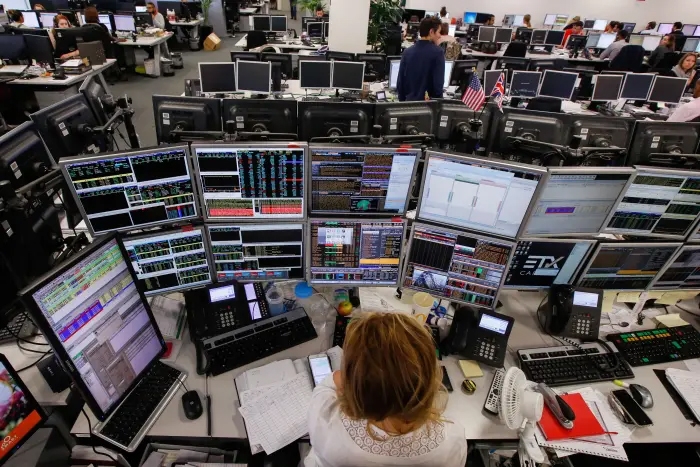
Equity markets have continued to take on a cautious tone, given the spread of COVID19 across Europe and the US, as hospitalisation and death rates increase (the UK recorded its highest daily death total from COVID19 since May) and more restrictions come on board to contain the spread. There are no fresh headlines on US fiscal stimulus talks and there is still the US election to navigate. Some 60m Americans have already cast their vote, in a surge of early voting to avoid crowded polling stations on election day.
The S&P500 has flatlined around the unchanged mark for the trading session so far, following yesterday’s 1.9% fall. Meanwhile, the Euro Stoxx 600 index closed down 0.8% to its lowest level since May.
In economic news, US durables goods orders were stronger than expected in September, including the core measures. The data suggest business investment still has upward momentum, but the trend has slowed over recent months. Consumer confidence slipped a little and remains well below pre-COVID levels but still relatively high in the context of the economic recession. Q3 GDP data due Thursday night will show a strong rebound in activity (consensus is at an annualised 32%), but with the spread of the virus, Q4 growth is looking soggy, suggesting a halt to the recovery.
The ECB’s quarterly survey of banks showed a tightening of credit standards on loans to firms in Q3, “indicating credit risk considerations due to the coronavirus pandemic”. In Q4, banks expect credit standards for firms to tighten further, reflecting “concerns around the recovery as some sectors remain vulnerable as well as uncertainties around the prolongation of fiscal support measures.”
The cautious market tone sees global rates lower across the board, with core European 10-year yields down in the order of 3-4bps. The US 10-year rate is down 3bps to 0.78%, following on from a fall of 5bps over the prior two trading sessions.
The NZ rates market caught up with the lower global yield backdrop after the Labour Day holiday, with longer maturity NZGBs down around 5-6bps, seeing a flatter curve. The 2-year swap rate fell 1bp to 0.00%, equalling the record low close seen early September. The recent rally follows the RBNZ reasserting its dovish credentials, with evident enthusiasm to offer more monetary stimulus, including negative rates. Weaker CPI data and the deteriorating global macro backdrop have recently been thrown into the mix.
The Treasury launched the new 0.25% coupon 15 May 2028 nominal bond, expecting to issue at least $2b and capped at $4b, with initial price guidance of 13-17bps over the April 2027 bond. The last update showed strong demand, with guidance narrowed to a 13bps spread and more than three times covered at the capped issuance amount.
In currency markets, the USD is weaker across the board, despite the cautious risk backdrop. The NZD continues to show puzzling resilience amidst the deteriorating global macro backdrop and one of the most dovish central banks in the world. After last week’s outperformance, the NZD again tops the daily leaderboard (excluding the Scandis), pushing up to about 0.6720.
The AUD, while up to 0.7140, continues to lag, seeing further upward momentum in the NZD/AUD cross to a fresh multi-month high of 0.9418 overnight. EUR has shown only a small gain against the USD, to 1.1825, with NZD/EUR up 0.5% for the day to 0.5680.
On the calendar today, underlying (trimmed mean) Australian CPI data is expected to remain soft, with inflation getting further away from the RBA’s 2-3% target range, supporting further easing at next week’s policy review. Tonight, the Bank of Canada isn’t expected to rock the boat with any further stimulus measures.

We welcome your comments below. If you are not already registered, please register to comment
Remember we welcome robust, respectful and insightful debate. We don't welcome abusive or defamatory comments and will de-register those repeatedly making such comments. Our current comment policy is here.